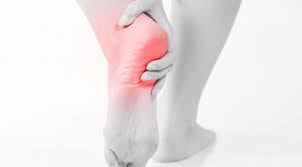 Plantar fasciitis is an injury commonly associated with overuse or overtraining. Plantar fasciitis (foot or heel pain) often occurs when the patient changes or increases their running program or is traveling and increases their walking distances quickly. A change in shoes or running/walking surfaces can also initiate the symptoms of plantar fasciitis.
Plantar fasciitis is an injury commonly associated with overuse or overtraining. Plantar fasciitis (foot or heel pain) often occurs when the patient changes or increases their running program or is traveling and increases their walking distances quickly. A change in shoes or running/walking surfaces can also initiate the symptoms of plantar fasciitis.
In some cases, plantar fasciitis can be caused by a traumatic event. The patient will usually describe a slip or fall that initiated the onset of pain. Sports that involve running, cutting, changing directions, and stopping/starting quickly have their share of plantar fasciitis diagnoses. Typically, the patient will describe a very quick change of direction, a collision while the foot is planted, or a quick burst of speed that precipitated the onset of pain. These types of injuries are associated with swelling and, sometimes, bruising. These symptoms would indicate a plantar fascia tear and coincide with severe pain and dysfunction. Plantar fasciitis caused by overuse usually coincides with less intense pain. This pain is often worse when the patient first steps down out of bed in the morning and eases as they walk more throughout the day.
Both types of injuries respond well to rest, ice, and elevation. Physical Therapy is very helpful in the recovery process for several reasons. The physical therapist will do a thorough evaluation of the entire leg to ensure that the trunk/hip, knee, and ankle/foot are working harmoniously. Common findings during the evaluation are tightness of the involved ankle/foot, tightness of the muscles of the hip and knee, and weakness of the trunk/hip muscles. These imbalances put stress on the plantar fascia.
Often, the patient will wait to seek treatment in hopes that the symptoms will disappear spontaneously. Delaying treatment can lead to further compensatory behaviors (limping or modifying the manner in which one walks) which can lead to other problems (back, hip, or knee pain). Treating plantar fascia early often leads to quicker resolution of the symptoms and fewer compensatory issues to deal with. Getting the patient back to their active lifestyle is the goal of the physical therapist.
The physical therapist is also a good resource for answering the patient’s questions. He or she may guide and counsel the patient to avoid common mistakes that prolong recovery and show them techniques to accelerate the healing process.
Physical therapists are mechanics of the human body. Giving advice regarding how your body works and how to allow it to heal after injury is what we do.

